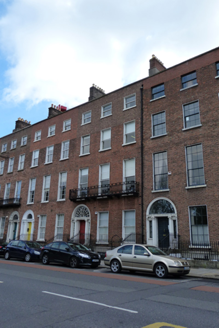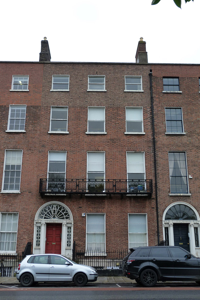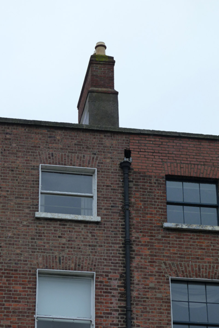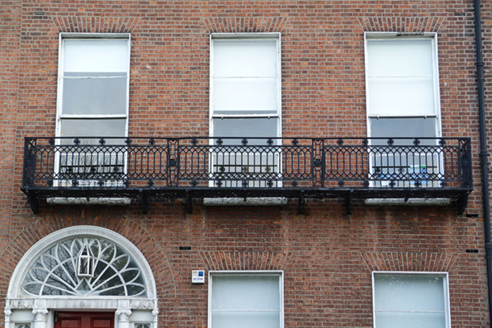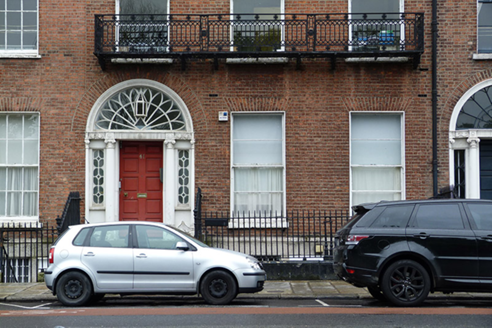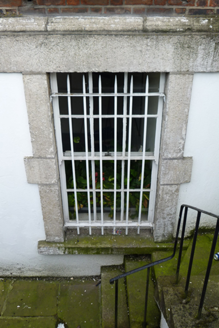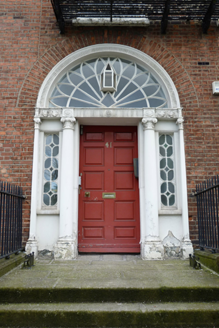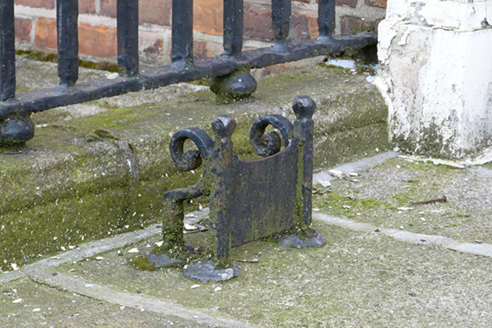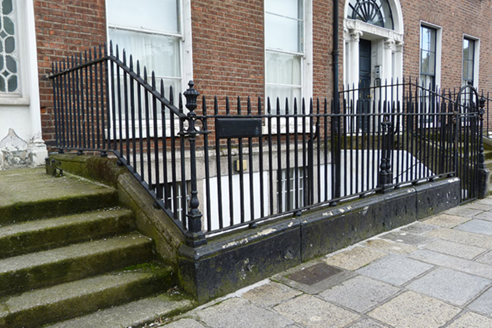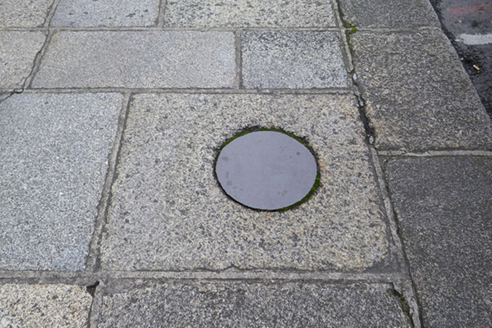Survey Data
Reg No
50100507
Rating
Regional
Categories of Special Interest
Architectural, Artistic
Original Use
House
In Use As
Office
Date
1780 - 1800
Coordinates
316837, 233486
Date Recorded
10/08/2016
Date Updated
--/--/--
Description
Attached three-bay four-storey former house over basement, built c. 1790 as one of terrace of three (Nos. 41-43), with full-height return to north end of rear with flat felt roof, and further two-storey block with slate roof. Now in use as offices. Pitched slate roof to front, behind brick parapet with granite coping, with two hipped roofs to rear perpendicular to street. Shouldered brick chimneystacks with clay pots, south stack having rendered base. Cast-iron rainwater goods to south. Flemish bond brown brick walling on moulded granite plinth course over rendered basement walling, apparently rebuilt in lighter-coloured brick above second floor window head; rendered walling to rear. Square-headed window openings, diminishing in height to upper floors, with raised rendered reveals and painted granite sills, and with carved granite block-and-start surrounds to basement. Timber sliding sash windows, six-over-six pane to basement, replacement two-over-two horizontal-pane to ground and first floors, and one-over-one pane to top two floors. Decorative continuous cast-iron balcony to first floor, and wrought-iron grilles to basement. Timber sliding sash windows to rear and to return with apparently six-over-six pane windows, tripartite to south bay of house. Elliptical-headed tripartite doorcase, with render surround, fluted and rosetted frieze over door opening, engaged Ionic columns with pilaster responds flanking decorative geometric sidelights with swags to frieze, Gothic fanlight incorporating lantern within slightly recessed fluted surround, and ten-panel timber door with brass furniture. Granite platform with decorative wrought-iron boot-scrapes and five granite steps. Basement area enclosed by wrought-iron railings with decorative cast-iron posts on moulded granite plinth. Flight of granite steps with wrought-iron railing leading to basement area. Cast-iron coal-hole covers set in granite flags to pavement. Interior noted by Casey (2005) as having simple neo-Classical detailing.
Appraisal
No. 41 Merrion Square forms part of the original development of the eighteenth-century square. It was built on a plot leased to Nicholas Le Favre in the late eighteenth century. It retains an Adamesque doorcase to its otherwise retrained classical facade, complete with sidelights and fanlight and a projecting lantern which would have lighted the entrance, providing a strong decorative focus. This is supplemented by the full-width ornate iron balcony. Together with its intact setting details, this ensures that the building contributes to the intact appearance of the streetscape. Developed as part of the Fitzwilliam Estate, square is one of the best-preserved Georgian streetscapes in Ireland. The north, east and south sides of the square are lined with terraced houses of eighteenth and nineteenth-century date, while the west side is terminated by the garden front of Leinster House. The houses of the east side are the most uniform of the terraces on the square, maintaining similar building heights and fenestration patterns. Individuality was introduced through the use of elaborate doorcases, window ironwork and interior decorative schemes. The east side of the square was originally set out in five large plots and the houses built here were generally narrower than those on the north side and erected in a piecemeal fashion.
